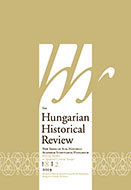Remarriage Patterns and Stepfamily Formation in a German-speaking Market Town in Eighteenth-Century Hungary
Remarriage Patterns and Stepfamily Formation in a German-speaking Market Town in Eighteenth-Century Hungary
Author(s): Katalin SimonSubject(s): 18th Century
Published by: Magyar Tudományos Akadémia Bölcsészettudományi Kutatóközpont Történettudományi Intézet
Keywords: Óbuda/Altofen market town; stepfamilies; marriage strategies; remarriage patterns; stepparent–stepchild relations
Summary/Abstract: First, this study addresses issues related to the gendered patterns of remarriage in an eighteenth-century market town. Second, it investigates interpersonal relationships in the new family formations, including stepparents and stepchildren. When and why did widows and widowers choose to remarry? How did new marriages effect the lives of children born into earlier marriages? Drawing on several kinds of archival sources, such as marriage contracts, council protocols, court and parish records, the paper provides an in-depth case study, which by tracking multiple marriages and children of both spouses shows the complexity of the blended families which came into existence through the remarriage of spouses.
Journal: The Hungarian historical review : new series of Acta Historica Academiae Scientiarum Hungaricae
- Issue Year: 8/2019
- Issue No: 4
- Page Range: 757-788
- Page Count: 32
- Language: English

